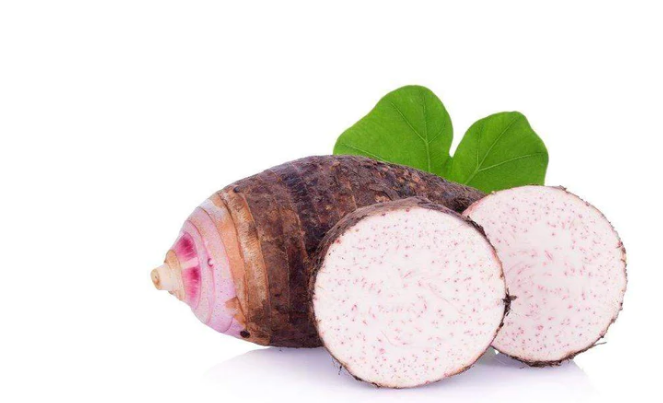The Taro Plant: A Comprehensive Guide and Its Significance in India

Taro, a widely cultivated tropical plant, is known for its large, heart-shaped leaves and its starchy root. Popular in various cuisines across the world, taro has made its mark for its versatility and health benefits. But what is taro called in India? Is it the same as the so-called elephant ears? Let’s dive deep into the world of the taro plant and unravel its mysteries.
Also Read:- Snake Plant: The Perfect Houseplant for Beginners
Introduction to Taro
Before we address the significance of taro in India, it’s essential to understand its origin and general features. Taro, scientifically named Colocasia esculenta, is a perennial tropical plant primarily grown for its edible corms. With a history of cultivation spanning over 5000 years, it’s no surprise that taro has integrated itself into many cultures and cuisines.
Taro in India: A Name with Many Variations
In India, a land of diverse languages and cultures, taro is not limited to one name. So, what is taro called in India? It’s primarily known as “Arvi” or “Arbi” in Hindi. However, its name varies across different regions. For instance, in Tamil, it’s referred to as “Seppankilangu,” while in Bengali, it’s “Kochu.” The variety of names reflects the plant’s widespread use and cultural significance across the country.
The Resemblance: Is Taro the Same as Elephant Ears?
A frequent point of confusion arises when taro is compared to ‘elephant ears’. To clarify, elephant ears is a colloquial term for plants with large, heart-shaped leaves. Taro belongs to the genus Colocasia, which indeed has species with leaves resembling elephant ears. Therefore, while all taro plants can be termed as elephant ears, not all elephant ear plants are taros suitable for consumption.
Indian Taro Root Plant: A Culinary Staple
India, with its diverse culinary landscape, has incorporated the taro root into various dishes. The Indian taro root plant, once cooked, offers a creamy texture and a mild, nutty flavor. From the spicy ‘Arbi Masala’ to the tangy ‘Arbi ka Patta Kadhi’, the applications are extensive and delightful.
But beyond the flavors, the taro root is also packed with nutrients. It’s a great source of dietary fiber, potassium, and vitamin C, making it a healthful addition to any meal.
Safety First: Is Taro Plant Safe to Eat?
Given its widespread consumption, a pertinent question arises – Is the taro plant safe to eat? The answer is both yes and no.
Raw taro contains calcium oxalate crystals, which can be irritating to the mouth and throat. Consuming raw taro can lead to serious health issues, including throat swelling, breathing difficulties, and even kidney stones.
However, when cooked properly, these harmful compounds break down, rendering the taro both safe and delicious to eat. It’s essential to cook taro thoroughly before consumption. Additionally, wearing gloves when peeling and handling raw taro can prevent skin irritation.
Conclusion: The Taro Plant’s Global and Indian Legacy
From its heart-shaped leaves that inspire its comparison to elephant ears, to its nutritious roots which find their way into delectable dishes, the taro plant holds a special place in the hearts (and kitchens) of many. Its varied names in India, from “Arbi” to “Seppankilangu,” stand testament to its widespread appeal and versatility.
When handled and cooked with care, the taro plant offers not just taste but also an array of health benefits. As with many things in life, understanding and respecting the taro ensures that its consumers get the best of what it offers.
Whether you’re exploring global cuisines or trying to understand the flora around you, the taro plant, with its rich history and multifaceted use, is undoubtedly a topic worth delving into.
Frequently Asked Questions (FAQs) about Taro Plant
- What is taro called in India?
- Taro is commonly referred to as “Arvi” or “Arbi” in Hindi. However, in different regions of India, it has various names. For instance, in Tamil, it’s called “Seppankilangu,” and in Bengali, it’s “Kochu.”
- Is taro the same as elephant ears?
- While all taro plants can be termed as elephant ears due to their large, heart-shaped leaves, not all elephant ear plants are taros that are suitable for consumption. Taro belongs to the genus Colocasia, which includes species with leaves resembling elephant ears.
- How is the Indian taro root plant used in cooking?
- In India, taro root, once cooked, provides a creamy texture and a subtle, nutty flavor. It’s used in various dishes, from spicy curries like ‘Arbi Masala’ to tangy gravies like ‘Arbi ka Patta Kadhi.’
- Is taro plant safe to eat?
- Taro is safe to eat when cooked properly. Raw taro contains calcium oxalate crystals, which can irritate the mouth and throat. It’s crucial to cook taro thoroughly to break down these harmful compounds. Also, it’s advisable to wear gloves when handling raw taro to prevent skin irritation.








